The Ninja Engine Alarm Column – This Week in Games
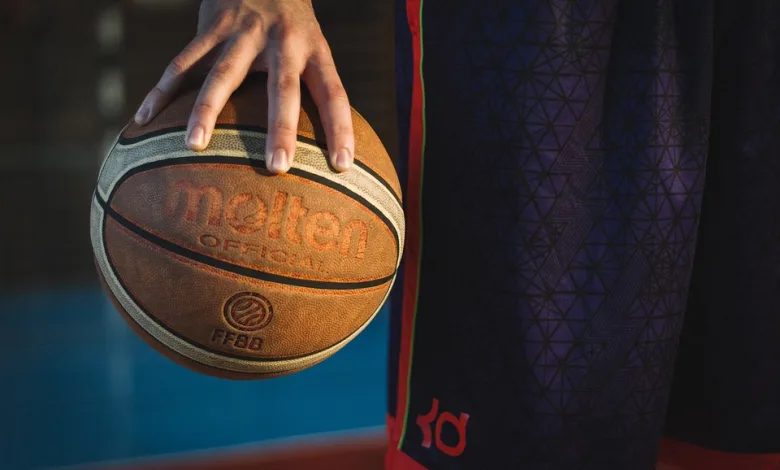
Welcome back, folks! October is in full swing, bringing with it Inktober, the yearly month-long hashtag where artists try to produce a single-inked drawing every day. One of my favorite artists made a neat Bunnygirl, Alma Armas, and was selling the original art over the weekend; I’m kicking myself for missing that sale, but oh well. We’re in for a lot of artistic treats for the rest of the month. Also, holy crap, do I need to eat my words on Metaphor: ReFantazio. I had my doubts about that game, but they really pulled it off from the looks of it! Going to have to put that one on the pile. Likewise, what a surprise that that Silent Hill 2 remake turned out well! It goes to show studios that made bad games can also make good ones.
This is…
Sony Curbs Scalpers, Says “Players Only!”
Scalpers are the bane of anybody trying to get their hands on a new console, especially regarding limited-edition stuff. It’s bad enough when stuff is in short supply, worse yet when it’s because malicious types want a second bite at the apple to charge an arm and a leg for that hot commodity. Sadly, there isn’t much that can be done—especially not without genuine buyers getting gated. It’s a tough problem, but Sony thinks they may have found a solution for their own edge case.
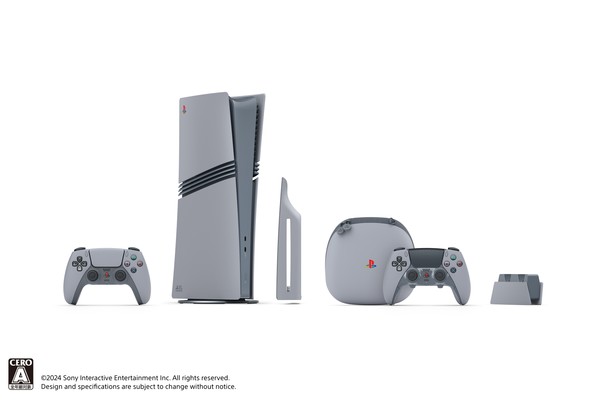
© Sony Interactive Entertainment
We all know about the PlayStation 5 Pro, Sony‘s overly expensive “upgrade” to their current console. You might have also heard that Sony sweetened the pot by making a limited-edition redesign of the console, inspired by the original PlayStation console, in honor of its 30th anniversary. It costs $1,000 USD, and is currently unavailable for sale. Sony of America could tell that American fans couldn’t be trusted not to scalp the console, hence limiting purchases to one per customer. But Sony of Japan may have found another solution.
See, over in Japan, the pre-orders are based on a lottery, but even then, access is limited by a simple factor: anyone who wants to pre-order a Japanese edition of the PlayStation Anniversary console has to have a Sony account registered in Japan—and they have to have at least 30 hours logged into their account from between 2014 and 2024. It is not a fool-proof window, to be sure—even with the shortage of PlayStation games, 30 hours isn’t impossible to pull off. But it blocks off anyone who’s only here to cop a console.
Sony hasn’t confirmed that this method is specifically to block off scalpers, but I subscribe to the theory that the purpose of a system is what it does. As I said, it’s not a foolproof system, but it’s a creative solution and one that I hope other publishers start incorporating somehow. The main problem is that it nevertheless filters people who don’t have Sony accounts. It’s easy to assume that anyone who’d be interested in games will already have an account, but remember: there are a lot of people out there who only buy a console for Madden (or FIFA if you’re outside of the US). Sure, the PlayStation Anniversary console might be outside the price range of a casual buyer, but what about something like, say, a golden Switch console in commemoration of a new Zelda game? What about something like the NES Mini or the PlayStation Classic, which both hold plenty of appeal to nostalgic audiences who might have fallen off of gaming in the meantime?
I still think it’s a step in the right direction; scalpers are a blight upon the industry and ruin everything for everyone. I look forward to the kind of advancements in anti-scalper policy publishers will adopt in the future.
Monolith Announces New Engine
In an interview with Japanese website CGWorld, Monolith Soft’s founder Tetsuya Takahashi and lead programmer Michihiko Inaba announced that they’re currently working on a new engine for the studio’s future projects. Let’s talk about this! I normally don’t give a rip about engines. I’ve seen people spill gallons of ink about all of the stuff the Unreal Engines can do, whether or not a game uses Havok, or how Crysis can reticulate splines 16% better than the regular leading brand. As much as I love games, I can’t be bothered to give a flying rip about any of that. As much as an engine might help or hinder a game’s development, engines don’t determine a game’s quality, and I’ve never been so attuned to the technical aspects of a game that I’d pour through an engine’s capabilities and see how well a game “takes advantage of them.” The logistical side of an engine can make or break a game in terms of budgeting or contracting; that much concerns me—just ask Silicon Knights how “their” engine worked out for Too Human.
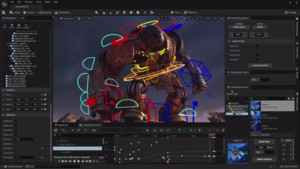
© Epic Games, Inc. All Rights Reserved
On that note: for the most part, game developers, for a long while, have resorted to simply licensing game engines for their projects. This has nothing to do with ideology and everything to do with a simple matter: it’s cheap. Gone are the days when writing your own engine for a game was a simple matter; with market demands and the high-quality assets that modern games utilize (plus details like physics engines, lighting engines, sound engines, and others), it’s simply more cost-effective for many studios to license Unreal Engine or Godot in order to produce their game. Time spent making your own engine that even attempts a baseline of what either of those engines can do is time that’s better spent actually making the game. And because experience with Unreal or Godot is fairly universal, hiring folks and onboarding them onto your project is easier. Plus, have I fully impressed upon you how expensive producing your own engine is? Square Enix produced their own engine for Final Fantasy XIII (Crystal Tools), which not only led to a whole host of headaches during production (what with FF13 being the game equivalent of the first broken egg when making an omelet, it also led to monetary issues for Square Enix. Square eventually managed to get Crystal Tools to work for Final Fantasy XIV (though not before its rather disastrous launch). Still, you can understand why Square Enix largely ditched the engine after Lightning Returns: Final Fantasy XIII in favor of the newer Luminous Engine.
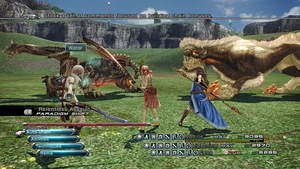
© 2009 SQUARE ENIX CO., LTD.
So we know how bad things can go in terms of making your own engine courtesy of Crystal Tools, but what happens if you’ve got halfway-decent management? Well, it can still go either way; producing an engine while working on a game can be like riding a train while still laying down tracks. But I think Monolith might manage something fairly special with an in-house engine. For one thing: Monolith is phenomenal at doing more with less. Credit needs to be given to them for making such massive games as the Xenoblade Chronicles trilogy work on the Nintendo Switch. The seams show, sure—but it still shows that they’re able to work within some incredible constraints to make some incredible visuals. You look at some of the sweeping vistas that Monolith has produced like the Gormotti Province or the Erythia Sea, with all of the hidden secrets and locales in those areas. And remember: Monolith’s compression is second to none. The Xenoblade games are easily 100 hours in length, and yet none of them even reach 15 gigs in size. (I feel like the industry doesn’t give Monolith enough credit for that; that’s some witchcraft compression). Those skills are why Monolith is such a useful pinch-hitter for Nintendo‘s other big titles, helping with major releases like The Legend of Zelda: Breath of the Wild.
In Monolith’s case, their interview emphasizes that what they want most from their engine are model rendering and effect engines; I’d hazard that this is to ensure that they don’t need to design a model with visible skin pores to look good and so they don’t have to dedicate absurd amounts of rendering for the detailed particle effects from things like Mythra’s auras or the motes from Xenoblade Chronicles 3. The interview also emphasizes that the scale and type of their projects prohibit them from readily utilizing pre-existing engines; as big an undertaking as producing a new engine is, Monolith did not decide upon it without heavy deliberation.
Monolith’s current title might feature this engine, or maybe they’ll hold off on demonstrating their new engine for whatever future projects they’re currently working on (it’s very likely that this new engine is being designed with Nintendo‘s new console in mind). If it makes Saito Masatsugu’s character designs look better, hey, I’m for it.
Sega Announces Shinobi Film
Video game movies are a rising hot commodity in Hollywood. With Warner Bros. and Disney currently mining DC Comics and Marvel Comics, respectively (and with vanishingly few comics outside of the Big Two for other studios to adapt), more turn to video games for potentially lucrative adaptations. And why not? The roving successes of the Sonic the Hedgehog films and the sole Super Mario Bros film proves that there’s money to be made, and the follow-up successes of Five Nights at Freddy’s (now with a sequel coming!) means that folks don’t even have to look to the major AAA studios for possible goldmines. We’ll just… ignore the Uncharted and Borderlands movies, shall we?
Universal’s got a nice deal going with Sega, what with the Sonic the Hedgehog films, so it shouldn’t be a surprise that they’ve got a new movie announced with Sega. What is something of a surprise is the series they’ve chosen. The list of major Sega tentpoles that you can make a movie out of is pretty small. After Sonic the Hedgehog, the bar for immediate recognition drops precipitously—and you don’t exactly help matters if you’re digging deeper than Like A Dragon. What do you go for? Virtua Fighter? Altered Beast? Rystar? They’re certainly not going to go for Comix Zone. Well, Sega and Universal’s answer is: Shinobi.
For folks unfamiliar with the series, Shinobi was Sega‘s answer to Ninja Gaiden for a long time, a side-scroller about a ninja hero named Joe Musashi doing battle against the evil Zeed organization and its many permutations. There was also the 2002 reboot on PlayStation 2 starring the ninja Hotsuma on a quest to defeat the villainous sorcerer Hiruko in order to avenge the Oboro clan. Much like Ninja Gaiden, the series featured grotesque mutant demon bosses. But where Ninja Gaiden emphasized its dramatic story (note: I’m going off of the pre-Tomonobu Itakagi reboot), Shinobi stuck to more of a high-flying action fare. Joe Musashi would also find himself fighting soldiers, another ninja, and sometimes even Spider-Man, Batman, and Mecha Godzilla.
The project already has a few names attached to it, notably director Sam Hargrave (best known for the Extraction movies), Ken Kobayashi (Move On) as screenwriter, and Adam Siegel and Marc Platt as producers. But you’ll forgive me if I don’t believe this movie will ever see the light of day. For one thing, we’ve seen quite a few of these projects getting greenlit. Two years ago, we saw the announcement of a Streets of Rage film from Lionsgate, which we haven’t heard anything about since (and that one had producer Toru Nakahara coming back to oversee things as he did with Sonic the Hedgehog). Earlier this year we also had news of a Golden Axe animated series for Comedy Central, as well as an Eternal Champions picture (side note: also a weird choice). And we haven’t heard much else about these projects! I’ll give Eternal Champions and Golden Axe some slack; it’s only been a few months for either of them—but two years with no word on that Streets of Rage film? Yikes. That one’s definitely in Production Hell, along with the Mahershala Ali Blade.
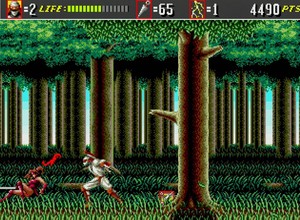
© 1993 Sega
But the other issue is that I’m not sure how you’d even do a Shinobi film in 2024. Ninjas were (culturally) all the rage in the 1980s when Ninja Gaiden and Shinobi were made. Japanese companies bought American corporate real estate at the time due to Japan’s growing influence on global industry, leading to the United States developing a mix of fear of and fascination with Japanese culture. Hence everyone’s vision of the future at the time was the Blade Runner dystopia where billboards would feature pill-popping geisha and your boss would be Japanese. (And now you know why Die Hard takes place in “Nakatomi” Tower.) Besides Frank Miller‘s gekiga-inspired runs on Daredevil popularizing ninja (and in doing so, setting the grounds for the rampant pop culture dominion of Teenage Mutant Ninja Turtles), folks could also appreciate seemingly endless ninja movies, many of which starring Richard Harrison (a.k.a., “mark collins, age 45”). Ninja Terminator, Ninja Strike Force, Ninja Powerforce, Diamond Ninja Force… the list goes on and on—and those are just the Richard Harrison ninja films! Ironically, with ninjas having become fairly mainstream in today’s day and age (no doubt due to the aforementioned Ninja Turtles as well as Naruto), ninjas have largely died off in cinema. The most recent ninja film I can think of is 2009’s Ninja Assassin, which definitely had the vibes of a modern-day 80s ninja-sploitation movie. That was still 15 years ago!
I’m not sure Shinobi would hold the same appeal to folks as a big blockbuster ticket in 2024 unless they really manage to nail the style down. They managed that with the Sonic the Hedgehog movies, but Sonic is a long way from Shinobi. We’re definitely not getting Joe Musashi or Hotsuma fighting ersatz Spider-Man or Batman. I’m not even sure whether they’d go with Hotsuma (who, following Project X Zone, seems to be the “current” face of the Shinobi series) or the original protagonist, Joe Musashi. Ideally, the project would look something like New York Ninja, but I don’t think many Hollywood producers watch Vinegar Syndrome releases. So I’m approaching this project with a lot of trepidation and suspicion. But if I’m wrong? Catch me at the theaters with my 80s-styled “NIN JA” headband, shouting the “NINJA!” anthem at the screen (clipped below).
Introducing Nintendo‘s New Platform: Waking You Up
Folks are on pins and needles in anticipation of Nintendo finally revealing their new game console. And Nintendo knows it. But they don’t seem to have anything to show us yet. Instead, what they decided to reveal this week is… an amusing bit of tech.
It’s called “Alarmo”, an “interactive alarm clock”. The alarm clock features a motion detector designed to read your movements while you’re in bed. When the alarm strikes, Alarmo is programmed to play sounds and music from five different Nintendo games (Ring Fit, Pikmin 4, Super Mario Odyssey, The Legend of Zelda: Breath of the Wild and Splatoon 3). As you move around to get up, the alarm syncopates with your movements with sound effects (like Mario coins). Once Alarmo has detected that you’ve properly gotten up from bed and are moving around, the alarm stops on its own. If you ignore the alarm for too long, the Alarmo plays more “intense” noises, like Bowser roaring at you. For the obvious question: the alarm doesn’t really work if there are two people in bed at once (the official suggestion is that you just use the included button for the alarm instead, in that case).
Alarmo also includes several “smart” features; by connecting to the Internet, Alarmo can download updates in the form of new sound packs (we know that two packs are in the works for both Mario Kart 8 and Animal Crossing). Alarmo can also play “soothing” sound effects from its included games to help people get ready for bed and track their sleeping habits.
I will admit I’m not a big fan of “smart” devices. An alarm clock that plays sounds from Nintendo games is cute, but in my opinion, it’s not “I’ll buy it for $100”-cute. Also, as some of my buddies have pointed out, the Pavlovian response from waking up to video game sounds will likely make some folks hate Breath of the Wild by association. It is an interesting bit of technology; however, the motion detector in the clock sounds like an ingenious development. Nintendo‘s history of toy making (like the Ultra Hand) has always put them at the forefront of finding new ways for people to interact with games. Between Alarmo and Pokémon Sleep, Nintendo is making further inroads into “lifestyle” goods. I’m not sure how I feel about that. It’s a fascinating field, but my relationship with technology is such that I don’t find use in gadgets that specifically track my sleep schedule or other biometrics. But I’m sure folks will appreciate an alarm clock that features sounds from Nintendo games. Heck, the possibility of there being a potential sound pack for Xenoblade Chronicles for the Alarmo was enough to get people discuss Xenoblade enough to get it trending on Twitter.
The other surprise is that the Alarmo has been in development for a long time; Nintendo has been working on “quality-of-life” tech since 2014 and updated the Alarmo patent in 2020. As some have pointed out, the developments that led to the Alarmo are likely one of the last things belated Nintendo president Satoru Iwata was involved with before his untimely passing in 2015. Iwata was especially keen on finding new ways for people to interact with games. He was one of the minds behind Nintendo‘s “Blue Ocean strategy” which led to the development of the Wii and Nintendo DS systems. It’s nice to see Nintendo keep some of that spirit alive.
While we were discussing Nintendo and their new tech, some eyebrows were raised later in the day following the Alarmo’s reveal. Folks were still waiting for any news on Nintendo‘s new console. We still don’t have it, stop asking—but Nintendo did put out a rather curious call for help testing an online feature for the Nintendo Switch Online service. The invite is open to anyone who has a Nintendo Switch Online + Expansion Pack subscription and lives in the United States, United Kingdom, Germany, France, Italy, or Spain, and it will require people to both sign up on Nintendo’s website and download a specific program onto their Switch. So far, we don’t yet know what this is for (Nintendo is tight-lipped, so far). Recruitment will last from October 10th to October 15th, with the playtest period lasting from October 23rd to November 5th.
The announcement has fans in a bit of a tizzy since this could likely be stress-testing a new feature for Nintendo Online—specifically, something that Nintendo is cooking for their new console. Some fans wonder if this might not be a possible Miiverse revival, especially in light of Nintendo shuttering its connectivity with Twitter. Tough to say! While the Switch still has a touch screen, and it’s still somewhat possible to draw on it, Nintendo can restart the old engines on Miiverse for their new consoles and give players a new Nintendo-helmed platform. But we’ll know when we know; considering how testy people get with Nintendo, some poor schlub is likely to break the NDA in the name of getting surprised when Nintendo sues them for being in breach of contract as part of the testing guidelines. More to follow!
Let’s wrap up with some quick tidbits
That’ll do it for this week, I think. As I live and breathe—an easy week, for once! The year isn’t quite out yet, there are still plenty of surprises to be had before winter comes and goes. My heart goes out to everyone in the southeast dealing with damages from hurricanes; it’s the purview of this column to discuss Japanese games, but people have a hard time playing games when they lose their houses. I’m hoping my readers and theirs are okay; if you’re able, please support the relief efforts. Doesn’t even have to be money, some folks could really use blankets or or donated blood. Be good to each other, I’ll see you in seven.
This Week In Games! is written from idyllic Portland by Jean-Karlo Lemus. When not collaborating with Anime News Network, Jean-Karlo can be found playing JRPGs, eating popcorn, watching v-tubers, and tokusatsu. You can keep up with him at @mouse_inhouse or @ventcard.bsky.social.
Source link
#Ninja #Engine #Alarm #Column #Week #Games




